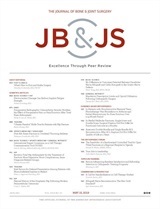
Bone-tendon-bone ACLR has significantly lower long-term revision rate vs. repair or synthetic graft
J Bone Joint Surg Am.2019Anterior Cruciate Ligament Reconstruction (ACLR) is a commonly performed surgery particularly in young active patients. Though it generally has shown promising results in the short term, long-term results are less clear, and there are concerns with regards to osteoarthritis and over-constraint. In this long-term (30-year) follow-up study, the authors randomized 150 patients to three different groups: primary ACL repair, ACLR with a synthetic augment, or ACLR with autologous bone-patellar tendon-bone (BPTB) graft. At 30-year follow-up, patients in the BPTB group had significantly lower rates of revision surgery than the other two groups. There were no significant differences in terms of range of motion, laxity, function, incidence of osteoarthritis, or activity level between the three groups.
Unlock the full ACE Report
You have access to {0} free articles per month.Click below to unlock and view this {1}
Unlock NowCritical appraisals of the latest, high-impact randomized controlled trials and systematic reviews in orthopaedics
Access to OrthoEvidence podcast content, including collaborations with the Journal of Bone and Joint Surgery, interviews with internationally recognized surgeons, and roundtable discussions on orthopaedic news and topics
Subscription to The Pulse, a twice-weekly evidence-based newsletter designed to help you make better clinical decisions
Exclusive access to original content articles, including in-house systematic reviews, and articles on health research methods and hot orthopaedic topics
Or upgrade today and gain access to all OrthoEvidence content for just $1.99 per week.
Already have an account? Log in


Subscribe to "The Pulse"
Evidence-Based Orthopaedics direct to your inbox.
{0} of {1} free articles
Become an OrthoEvidence Premium Member. Expand your perspective with high-quality evidence.
Upgrade Now












































































